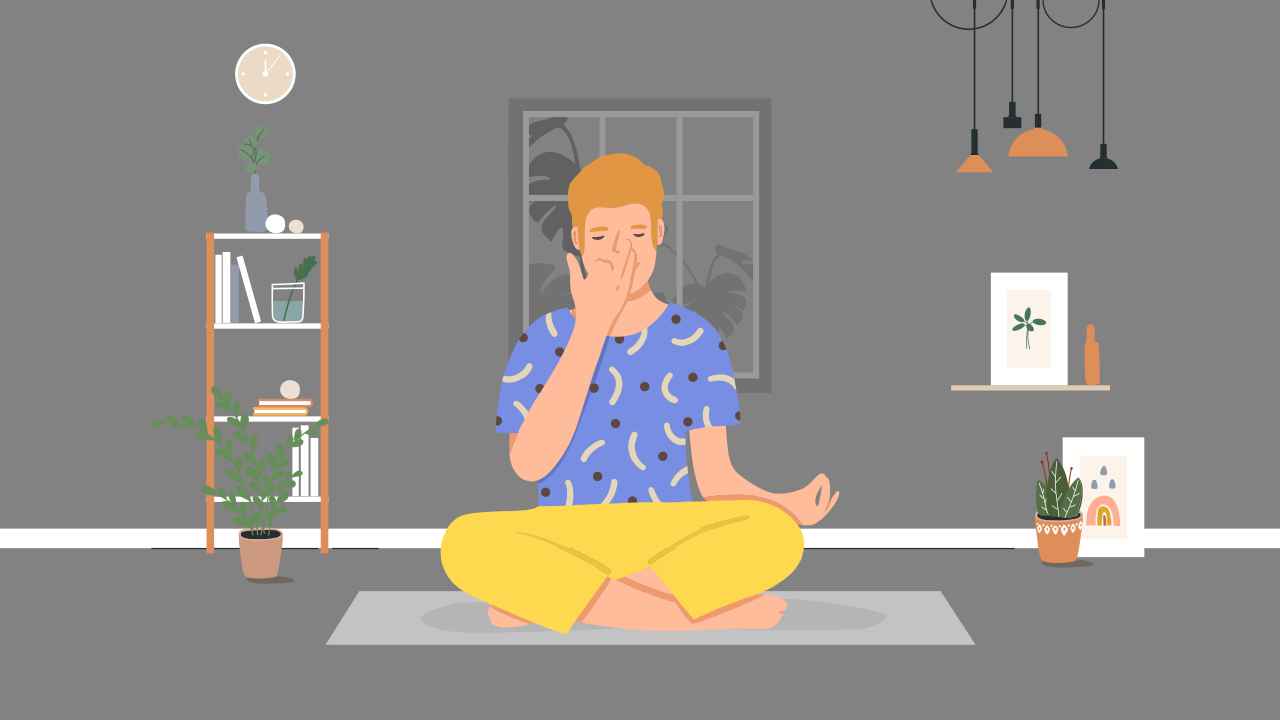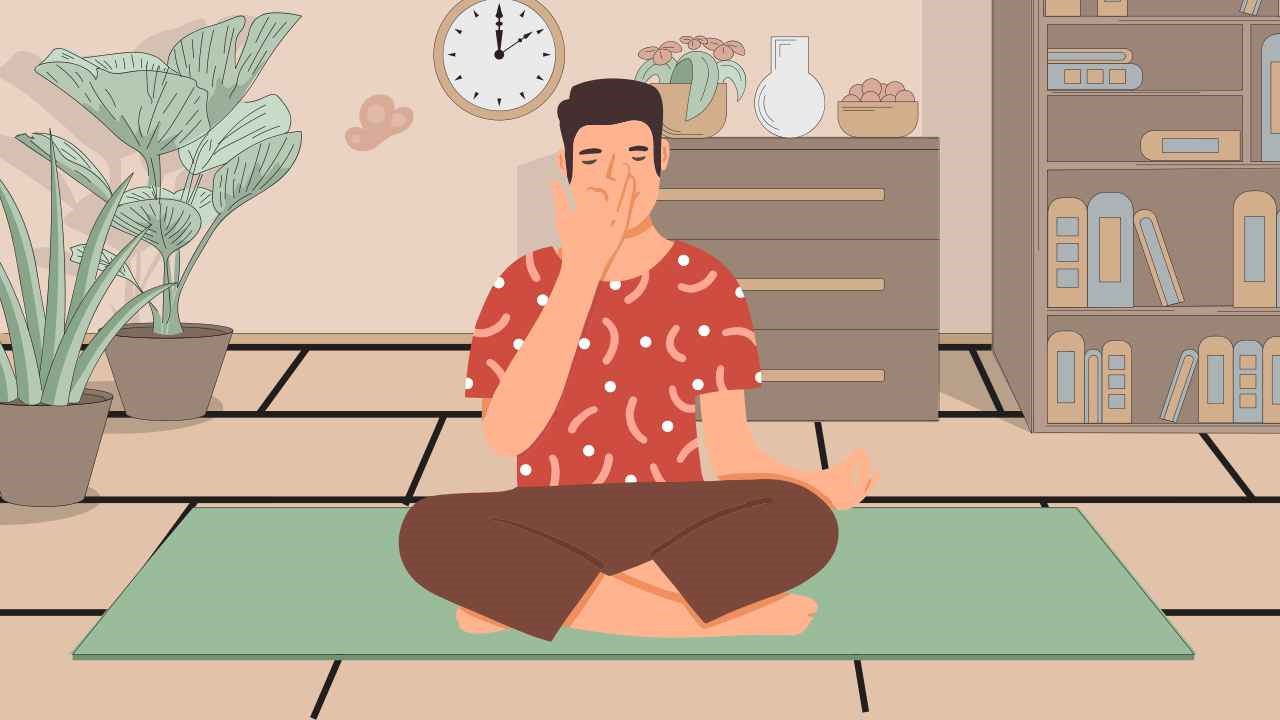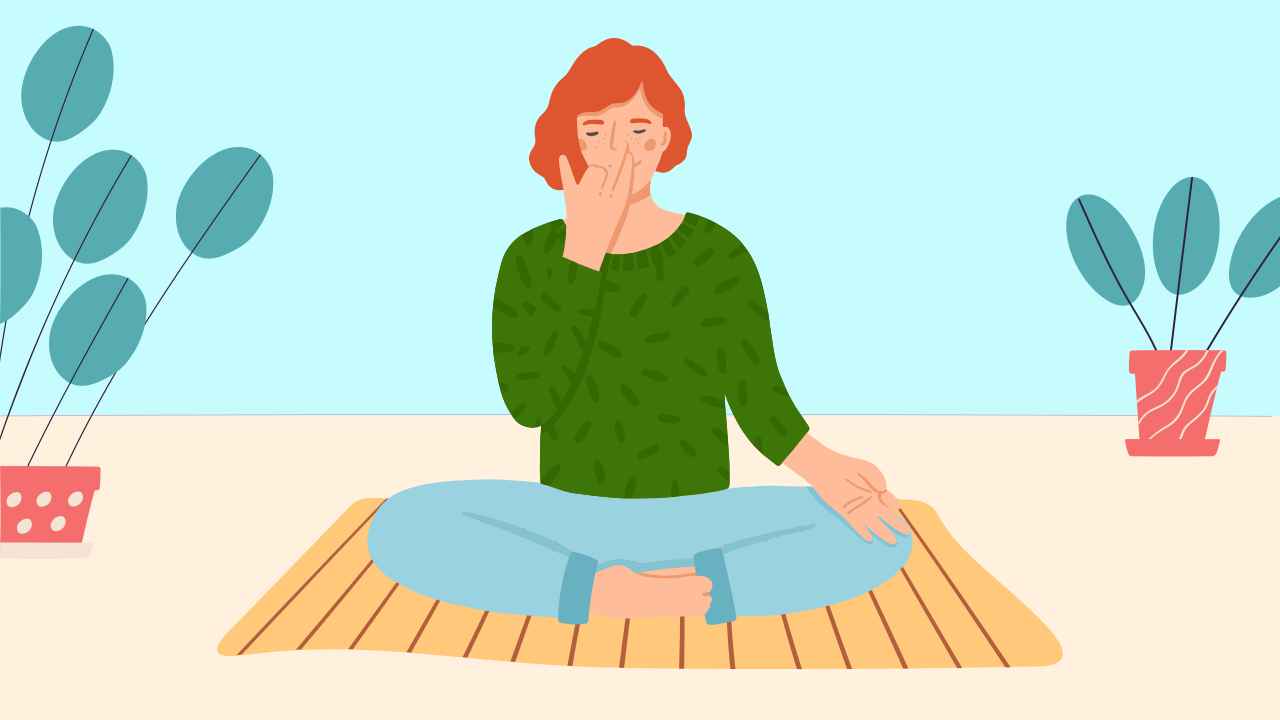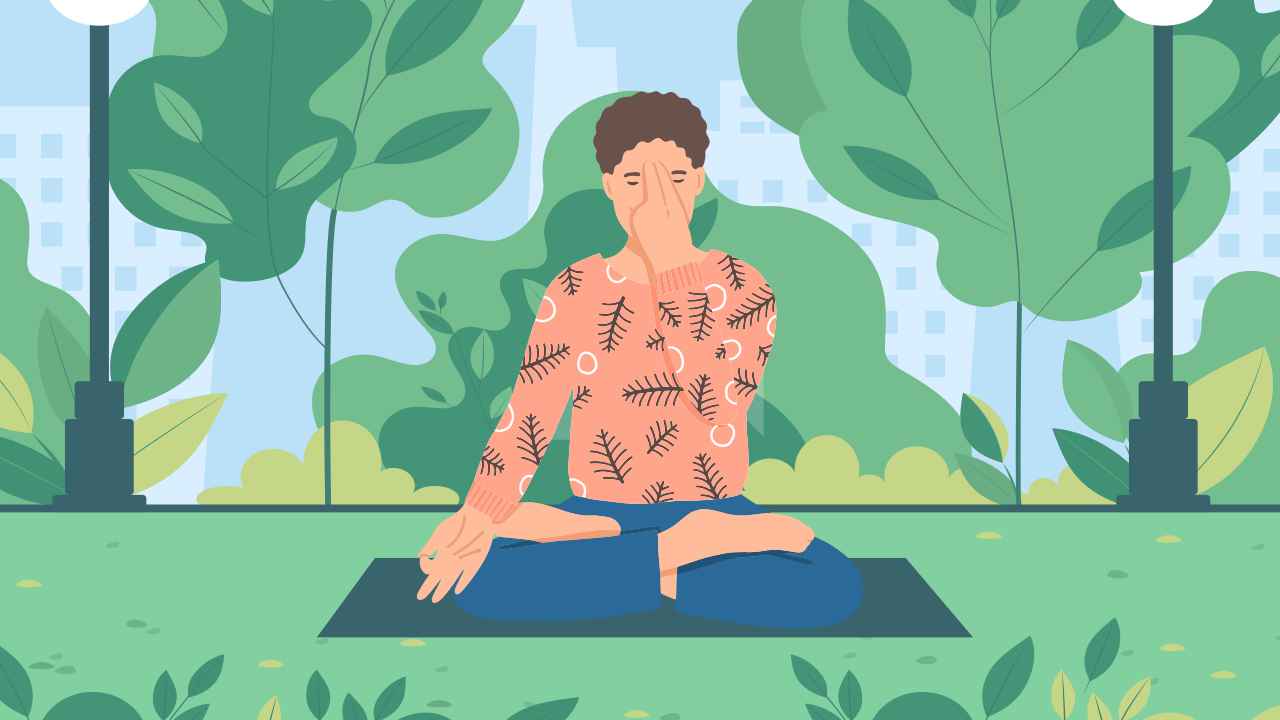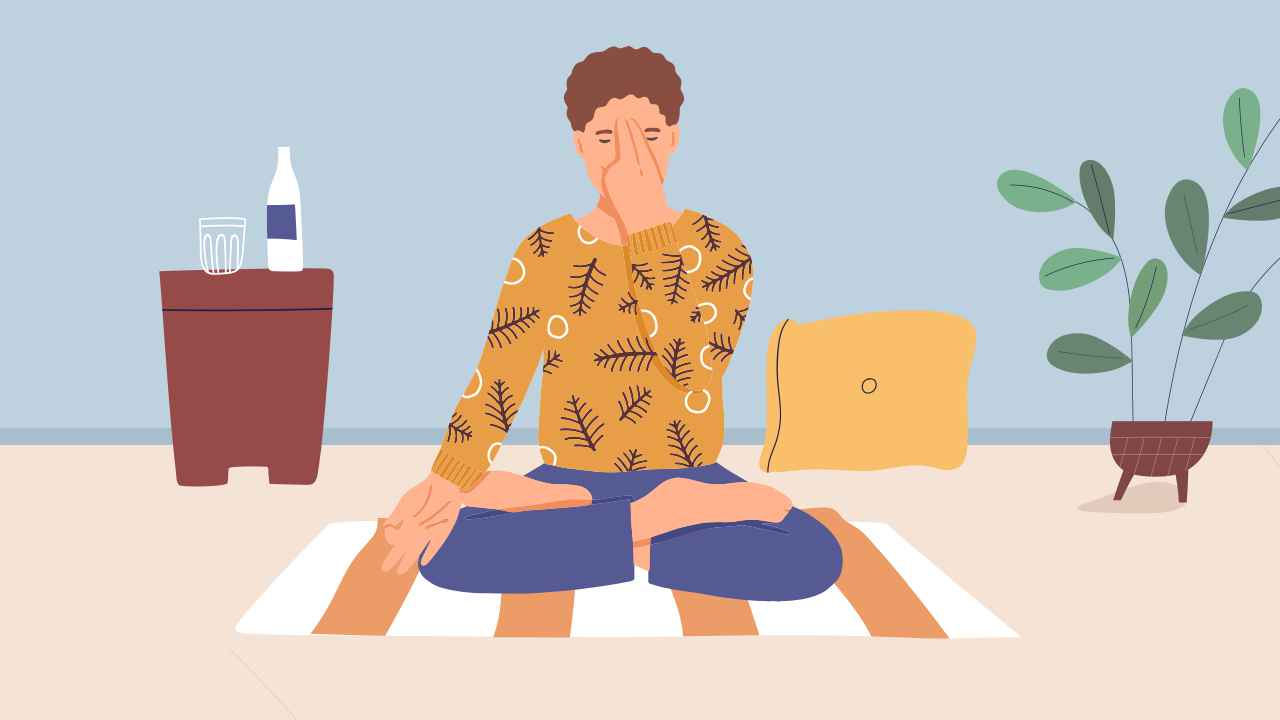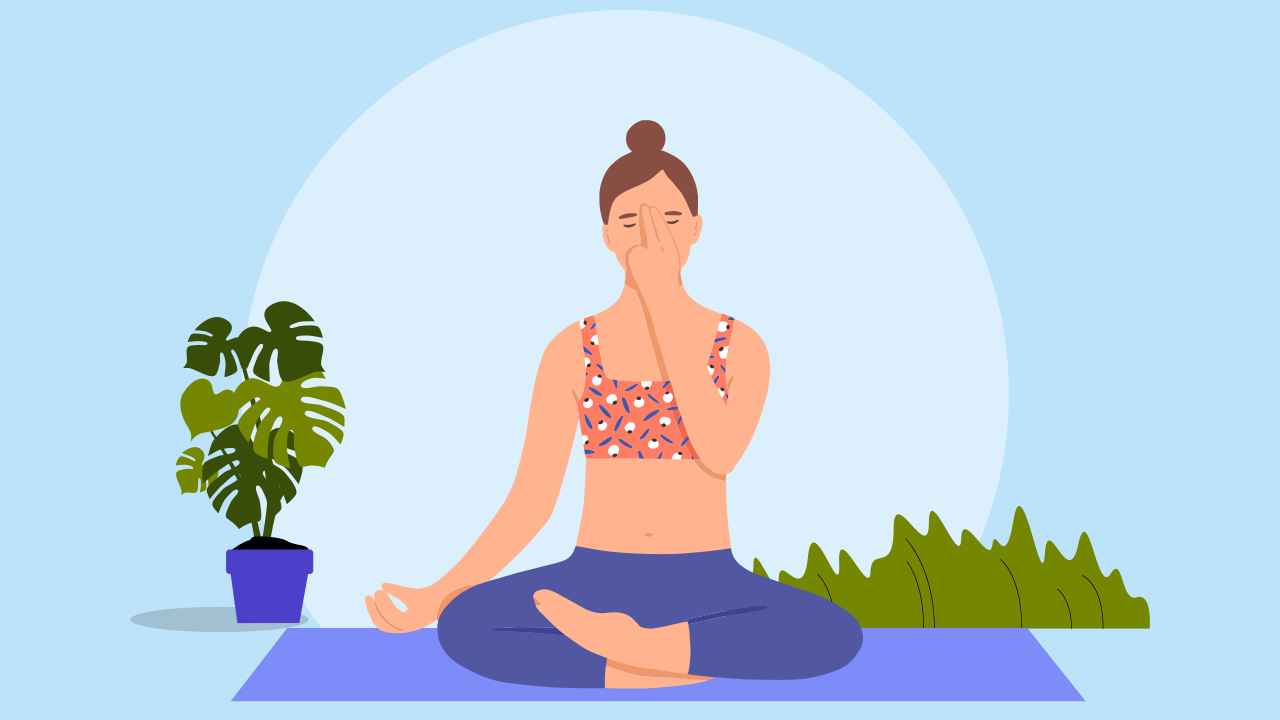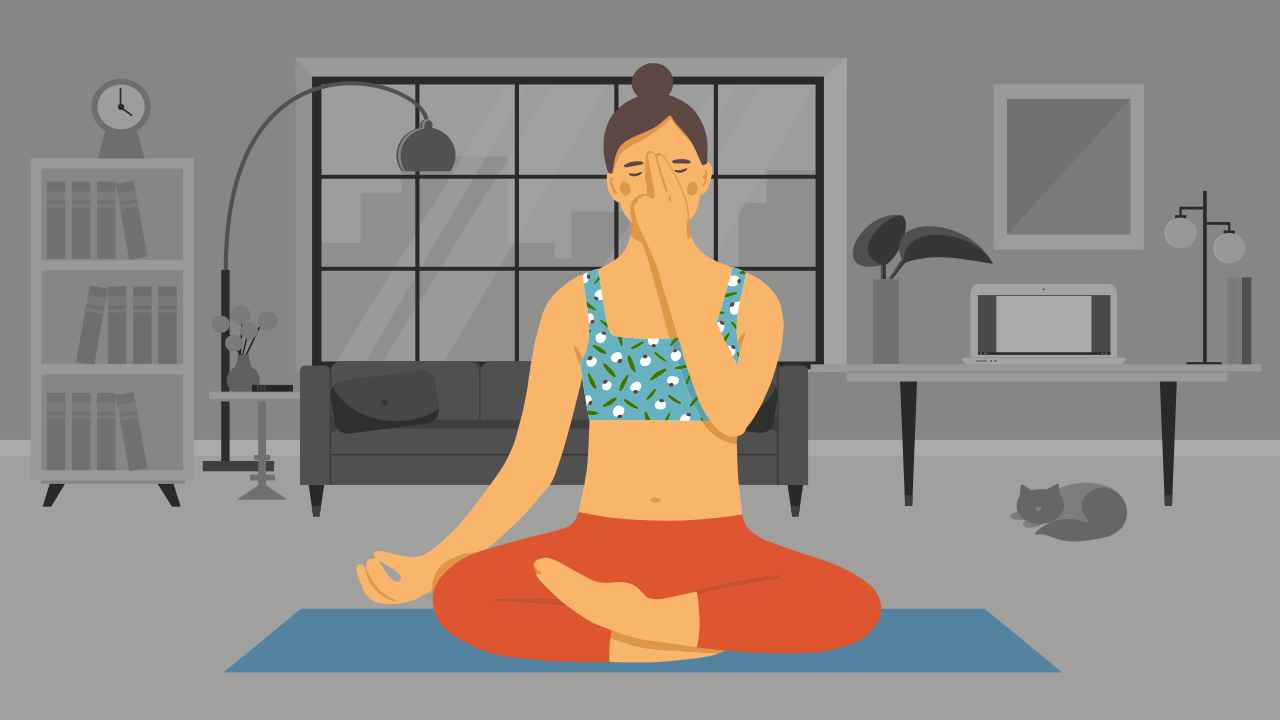
Yoga Props and How to Use Them Effectively
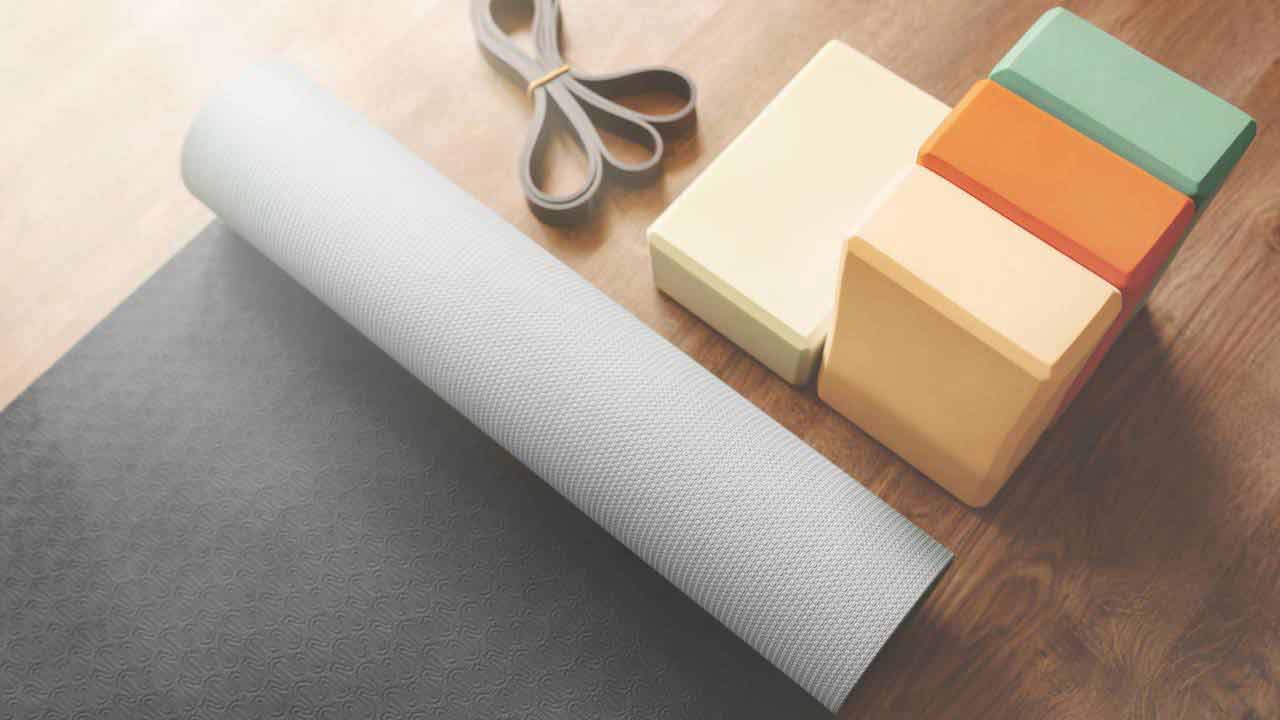
Yoga props not only prevent injuries, but help you progress in your practice while developing strength, balance, and flexibility. Check out how you can use the different props to enhance and optimize your yoga journey.
Yoga Block
A yoga block is generally used for the following:
To correct your alignment
Alignment is the most important component of asanas and something that is rather compromised in favor of flexibility. A yoga block is an excellent tool to help us work on strength, flexibility, alignment, and balance all at once.
For example, in Utthita Parsvakonasana or the Extended Side Angle Pose, it is important to keep both the side of your waist elongated and core engaged. Using a block allows you to lengthen both sides of your trunk and open up the chest. You can keep the block either in front or at the back of the foot as shown below.
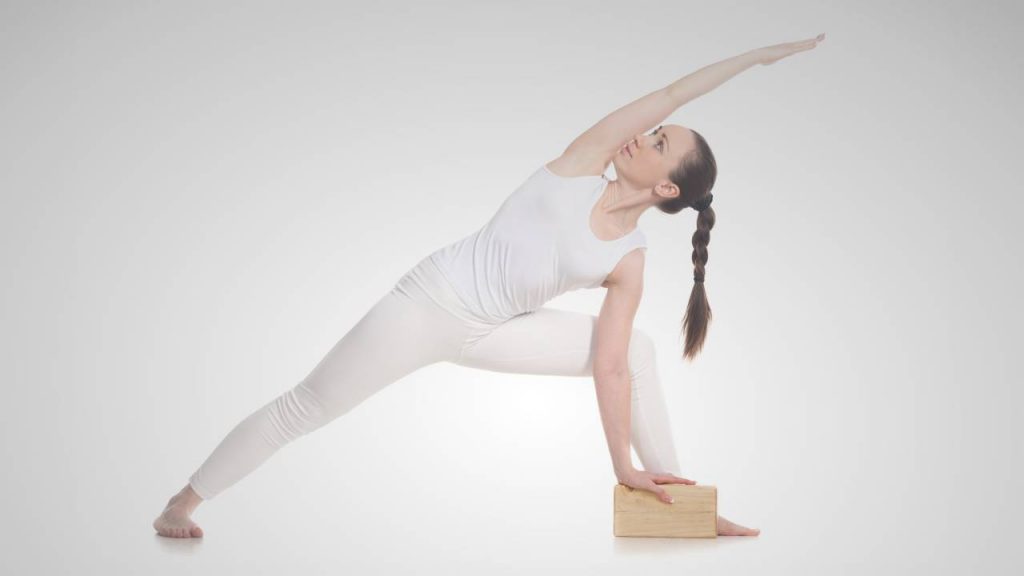
To secure balance
Balancing postures can be really challenging as you are working against gravity. Using a yoga block gives you a larger base of support and helps in building a strong practice. For example, using a block in Ardha Chandrasana or the Half Moon pose allows you to open the chest and activate the obliques even more, as you lift away from the floor rather than pressing into it. Additionally, having support allows you to focus on the external rotation of the hip and bringing it in line with the foot of the lifted leg.
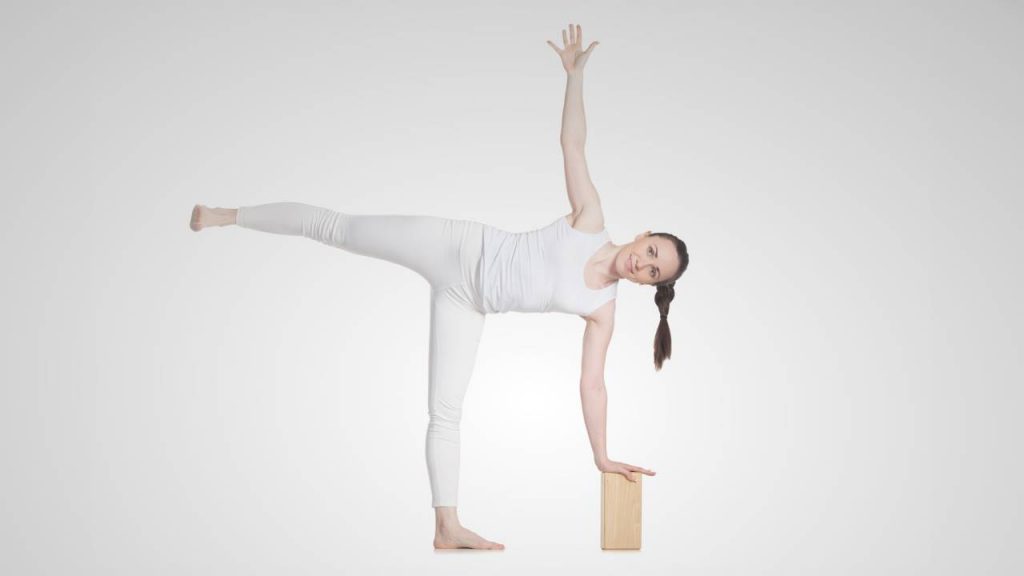
To provide support and allow you to soften and relax in the pose
Yoga props are used for many restorative practices. Using yoga blocks in order to deepen your practice in a static hold is quite common in an asana class. In a simple Supta Baddha Konasana or the Reclined Bound Angle pose, you may choose to place a piece of block under your knees in order to support them. This will allow you to relax in this posture for a prolonged period without discomfort.
Also read: Yoga Props: A Beginner’s Guide to Safe Practice

Bolster
Yoga bolsters are versatile in nature and can be used in different ways.
To aid in expansion and opening of the chest
The bolster is an excellent tool for someone who is working their backbends, but yet lacks confidence or suffers from any condition. Simply placing a bolster under your spine and neck in a comfortable supine position increases the body’s ability to open up and release any stress or muscle tension at the same time. You may choose to perform Matsyasana or the Fish pose in a similar supported manner to avoid any added pressure on the neck.

During relaxation
The bolster is said to enhance the experience of relaxation, at the same time making a pose more efficient. Relaxation postures are not just limited to Savasana and nor is the use of a bolster. For instance, in Balasana or the Child’s pose, using a bolster relaxes your head, neck and shoulders, which would otherwise be active in this pose. A classic bolster made with recon and 100% cotton cover is ideal for this posture.
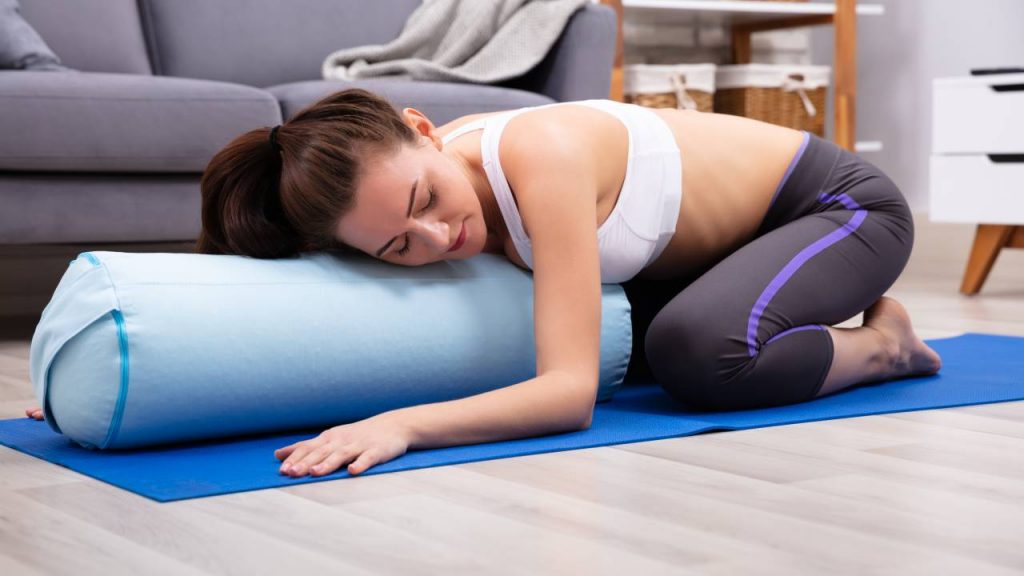
Provide assistance in difficult postures
Bolsters come in handy while performing postures, where the alignment is compromised. It helps us safely navigate through these poses while reducing any potential strain on our joints. For example, in Viparita Karani or the Legs Up the Wall pose, placing a bolster underneath your pelvis helps us form the desired angle without hurting the back. A versatile, buckwheat bolster that molds to your body shape can be used here.
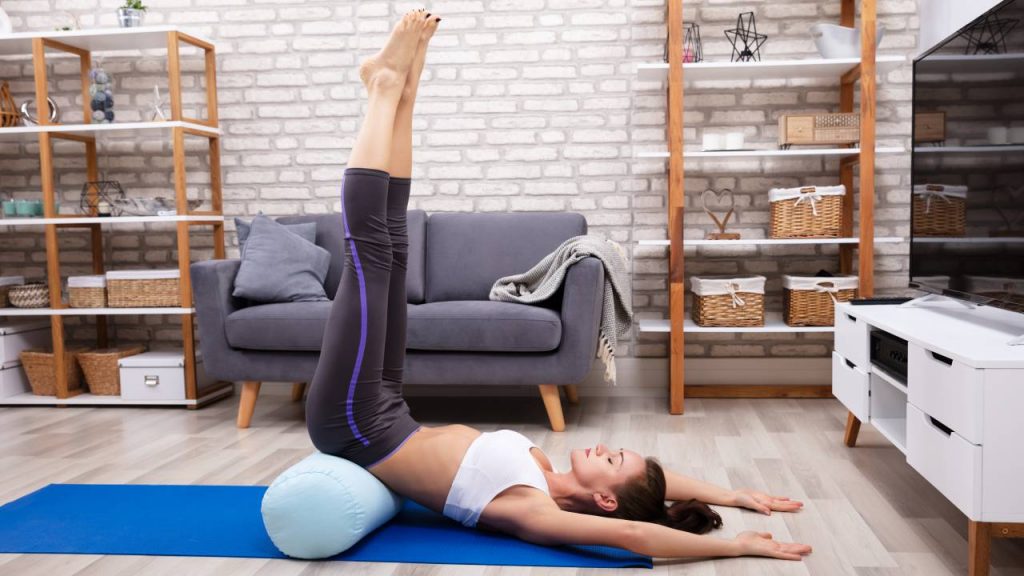
During meditative postures
Having open hips can make your seated postures much enjoyable and comfortable. If the knees and hips are not aligned in meditative postures like Sukhasana or the Happy Pose, it may strain the back and the pelvis. Seating on a bolster raises the hip to the height of your knees, thus allowing you to sit and relax in meditative postures. Try using a rectangular bolster with a flatter surface for sitting postures, you can also place them under your knees if your knees above the floor feel uncomfortable.

Strap or belts
A yoga strap is a creative prop that can be easily accommodated in your daily practice to not just improve alignment, but flexibility and strength as well.
Works on backbends
A yoga strap is a potent tool for improving your backbends, and using a strap can work wonders for mobility. For example, using a yoga strap to keep your hands and legs in place in Dhanurasana or the Bow pose allows you to focus on opening the chest area. Using a strap to find your flip grip in backbends can act as a game-changer in poses like Natrajasana or the Dancer’s pose and Rajakapotasana or the King Pigeon pose.
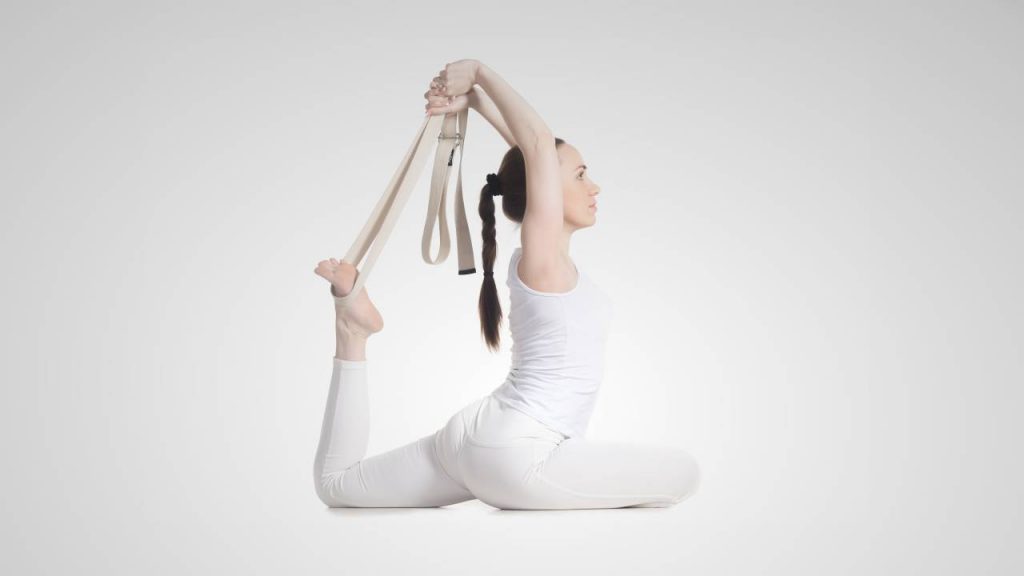
Improves alignment
Iyengar yoga introduced alignment to the world of asanas in a different light. There are various poses that use a strap in order to achieve accurate alignment. In Ardha Pincha Mayurasana or the Dolphin pose, wrapping a strap around your forearms helps maintain the hand and shoulder alignment. Similarly, in Setu Bandhasana or the Bridge pose, tightening a strap around your thighs keeps the knees from flaring out as you lift.

For relaxation
Yoga straps get a bad name for being used for strenuous yoga practices, but they are really advantageous in a slower or restorative environment as they provide a deeper intensity of the stretch and relax the body simultaneously.
Try using your yoga strap in Baddha Konasana or Cobbler pose in both seated and reclined variations, and Supta Padangusthasana or Reclined Hand to Big Toe pose to experience low back release like never before.
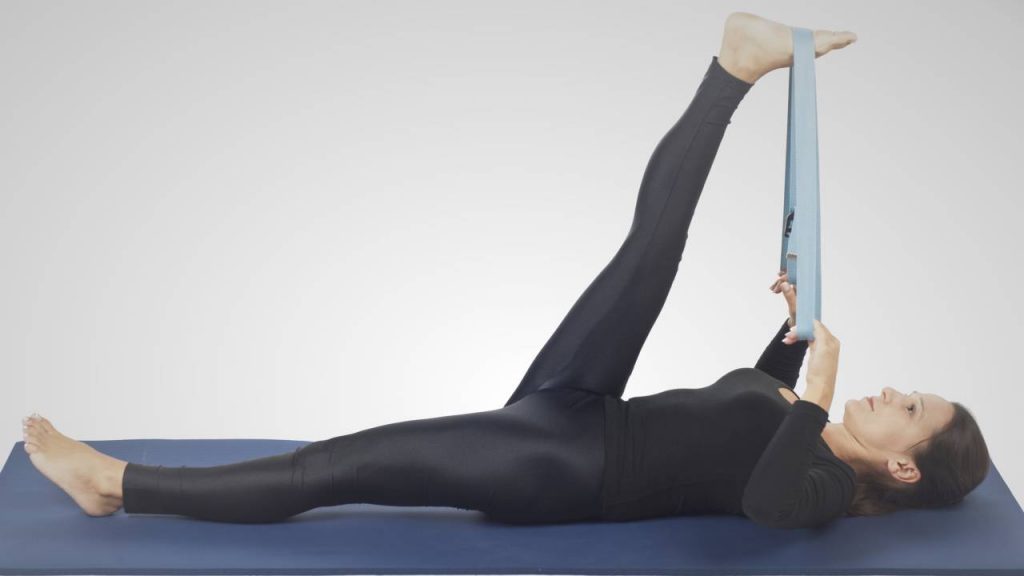
Yoga Wheel
A yoga wheel has plenty of benefits and is not just restricted to help you with back-bending postures.
Assists in your backbending journey
The design of the wheel makes it a suitable prop for beginning or even advancing in your back-bending postures. The assisted backbend allows the muscles of the back, neck, shoulder, and deep hip flexors to release tension and stretch completely. It works miracles on our spine by reversing poor posture that are an outcome of our sedentary lifestyle.
You can simply lie down on the wheel as you would in Matsyasana or the Fish pose and Ustrasana or the Camel pose, or take advanced versions such as Pincha Mayurasana or the Scorpion pose.
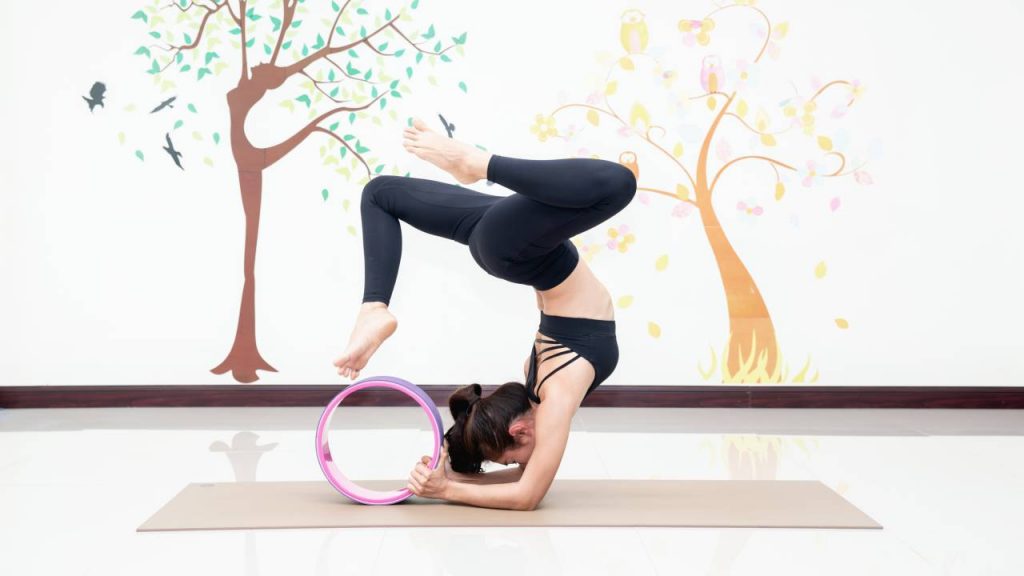
Improve flexibility- explore deeper stretch
Yoga asanas help improve your overall flexibility, but it’s not easily achievable. A yoga wheel not only allows you to comfortably transition into deeper stretches but also ensures that it is safe.
Using a yoga wheel for Halasana or the plough pose can warm up your hamstrings. For advanced practitioners, using a wheel during Hanumanasana or the splits pose increases the intensity of stretch on your legs.

Challenge your core and balance
The yoga wheel builds strength by challenging the core and balance. It is not just sturdy but is designed to uphold the weight of your entire body and can be incorporated into poses such as leg extensions, planks, reverse planks, inversions and malasana squats.

As you see, using props is not equivalent to “cheating” as is often believed. It is rather a tool to work smarter. Even advanced yoga practitioners can use props to reinforce, exaggerate, or improve alignment and range of motion. Props are for all levels.


